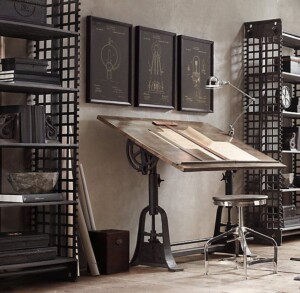DESIGN TIPS

1) The first rule is to be familiar with the space you will be decorating
Grab a pencil, tape measure, and graph paper and make a scale layout of the room’s perimeter. Even if you possess excellent spatial relational abilities, this is recommended because the best visual remembrances fail against the reality of a scaled drawing in front of you.
With the representation of the room, it is possible to determine the sizes of furniture you have or that you wish to purchase.
2) Making a checklist helps
Shopping for decorating supplies? Writing a list now will save you frustration later. Even if you do not purchase everything, check off what you get as you get it. Keep those paint chips, fabric samples and flooring swatches with you to coordinate with furniture, lighting and accessories, whether shopping online or in a brick and mortar store.
3) Establish a budget range
The guidelines of a budget save not only your wallet but sometimes your relationship. If you choose to splurge, at least you do so intentionally.
4) Walls and floors are your frame
Consider the floor and walls as your frame. Pay attention to the colors and coverings of your frame. As you decorate within this canvas, remember that this “frame” unifies your decorating, so it is most the logical place to start.
5) Lighting can set a mood
With the lighting possibilities today, you can set a mood in every room. Specialty glass, bulbs, dimmer switches and modules are available for everyone’s decorating style and budget.
6) Create interest
Stretch your decorating dollar and maybe your decorating comfort zone by mixing colors, textures and patterns. Take cues from pictures in magazines or displays in stores. Adapt ideas from design shows and make them your own.
7) Sense of style
Whether you prefer traditional, contemporary, or modern, decorate with your personal sense of style. Be bold not intimidated by mixing period pieces. Eclectic style works provided proportion, color, pattern and texture appear harmonious.
8) Research products
Happy consumers are those who do their homework before they buy. You may be a buyer instead of a shopper, but you would reap the rewards of some time spent learning more about the products you use to decorate—especially big-ticket items.
9) Balance and scale work together
When you look at the positioning of elements in your room and something hits a discord in you, chances are proportions clash. Getting the balance and scale right takes some practice. Again, take cues from other resources.
10) Use space effectively
It is eminently helpful to make scaled cutouts of the furniture and position all the pieces to your liking within your scale drawing. Gather large pieces to make the most of a focal point. Arrange some informal seating areas.
Now that you know these tips, you’re ready to begin. Decorate yourself happy!

